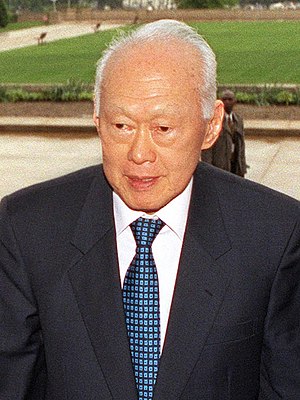Wireless Body Area Networks (WBANs), or simply Body Area Networks (BANs), represent a tremendous emerging opportunity for mHealth and will be a great stimulant for entrepreneurship and sustainable business models in this nascent sector for at least the next decade. This is the first post in a series about the promise and opportunity of Body Area Networks and the innovations that will drive the emergence of this advanced segment of mHealth.
BANs, enabled by vast networks of non-invasive and unobtrusive wearable sensors and peripheral devices, are emerging to a marketplace finally mature enough to stimulate a vibrant consumer base. Consumer mobile technology is for the first time just as powerful if not more powerful than the mobile technology used in the enterprise.
Potential applications of BANs include:
- Vital Signs Monitoring: Smart band-aids provide increased mobility and comfort while delivering essential real-time information.
- Proactive Cardiovascular Monitoring: Identify potential heart attacks before they happen using sensors implanted in (or worn on) the body to monitor sophisticated vital signs over wireless networks.
- Organ Implantation Monitoring: Monitor organ transplant recipients after discharge for signs of transplant rejection using implanted sensors.
- Seizure Monitoring: Wearable sensors allow clinical neurologists to monitor epileptic patients remotely in real-time and provide each patient biofeedback to help manage their condition.
BANs have the potential to drive cost-savings, improve efficiency, and increase sales of prescription drugs. The data collected by BANs will create significant business opportunities for start-ups in the cloud computing, data management/analytics and bioinformatics verticals.
WBANs require solutions that blend both hardware and software elements and are typically developed by more than one company or vendor (particularly start-ups) working together under strategic partnership or joint venture. Products in this space tend to be derived from academic research, primarily due to the minimal private investment in R&D, leaving most breakthroughs in BAN technology to public research institutes and laboratories.
A recent report, published by CSMG, a global wireless consulting group, nicely summarized a few of the major implications of BANs for the business of mHealth:
- Cost Savings: BANs have the potential to radically undermine the ever-growing cost burden of managing chronic conditions. A BAN-based vital signs monitoring solution could be a cost-effective alternative to the last few nights of a patient’s hospital stay. At a cost of thousands of dollars per day for a hospital room, this application alone could have a tremendously disruptive impact on the health care cost curve.
- Improved Outcomes: Improved compliance, the ability to monitor and balance drug dosage to increase treatment efficacy, and more timely treatment will reduce the length of hospital stays and the need for expensive procedures.
- Increased Sales: While the low-hanging fruit for prescription compliance may be in solutions such as smart pillboxes, there is a significant longer-term opportunity to improve efficacy and compliance through the use of BAN-based monitoring.
- Improved Test Outcomes: Another potential area where BANs could prove particularly valuable is in the monitoring of clinical drug trials. The ability to calibrate dosage, gather improved data, and ensure total compliance will help pharmaceutical companies improve their chances of getting drugs through the trial process and to market.
- Context Awareness: BANs that capture patient physiological information using Smartphones have available dozens if not hundreds of contextual data points (i.e. geospatial) against which this physiological data can be compared to find correlations. This could be critical information when diagnosing and treating a patient suffering chronic seizures.
There are vast silos of raw patient data that can be captured and analyzed by ever increasingly intelligent algorithms trained to identify the signal from the noise and use the learned information to improve patient care and enhance efficiencies and cost savings across the full care cycle.
The companies positioned to benefit during the early adoption of BANs include developers of wearable sensor technology, peripheral devices, Smartphone applications, network providers, software-as-a-service (SaaS) providers and bioinformatics specialists. Each of these sub-sectors have the potential to represent at least 1 million new jobs for the American economy over the next 15 years, high-paying jobs for the educated unemployed.
It will take another 2-3 years for WBANs and the applications that leverage them to earn acceptance as mainstream technologies amongst consumers/patients and medical professionals, but their eventual adoption will give rise to an unprecedented era in medical technology innovation.
There are several angles one can take when analyzing the current and potential market for BANs, so I will begin by breaking it down by sensor vertical in a series of posts that highlight the disruptive technologies and innovative companies in the following segments;
- Accelerometer/Gyroscope
- Blood Glucose
- Blood Pressure
- Electroencephalogram (EEG)
- Electrocardiogram (ECG)
- Pulse Oximetry
More to come…
Sources:
- Simmons and Chan. “Body Area Networks: Driving mHealth Growth” (March 2011) CSMG.
- Chen, Gonzalez, Vasilakos, Cao and Leung. “Body Area Networks: A Survey”. Mobile Network Applications (2011) 16: 171-193.
Tagged with: 19 tagsFiled in: 3 categories
Body Computing and the future of health care.






![mhealthbanner01[1] mhealthbanner01[1]](http://cdn.imedicalapps.com/wp-content/uploads/2011/08/mhealthbanner011-300x50.gif)
![A2B02[1] A2B02[1]](http://cdn.imedicalapps.com/wp-content/uploads/2011/08/A2B021.png)
![humana-games03[1] humana-games03[1]](http://cdn.imedicalapps.com/wp-content/uploads/2011/08/humana-games031-300x152.jpg)
![humanavitality04[1] humanavitality04[1]](http://cdn.imedicalapps.com/wp-content/uploads/2011/08/humanavitality041.gif)
![humanaville05[1] humanaville05[1]](http://cdn.imedicalapps.com/wp-content/uploads/2011/08/humanaville051-300x192.png)
![PlumApp06[1] PlumApp06[1]](http://cdn.imedicalapps.com/wp-content/uploads/2011/08/PlumApp061-150x150.jpg)





